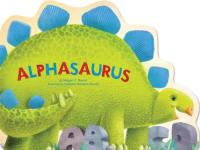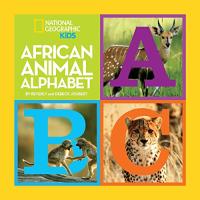
The voice of an old, blind Galileo Galilei is used to look back on a life that started in Pisa where early on he challenged tradition. Though confined, the elderly Galileo asserts that, “The truth has a way of escaping into the light.” Bold lines border illustrations to evoke time and place, enhanced by spot illustrations of Galileo’s work and observations.
I, Galileo

Bold, bright illustrations and a cheerful text that includes song lyrics introduce the life of an early 20th century African American performer. Though part of the Harlem Renaissance, Mills is a relative unknown who both on and off stage worked to help other African Americans and those who were less fortunate than she. An author’s note concludes this charming life sketch.
Harlem’s Little Blackbird: The Story of Florence Mills

The world changed when rags and bone, sticky stuff, and other things came together in the hands of a man who lived in the German city of Mainz. Johannes Gutenberg had printed a book in a new way. Readers will be drawn in as the elements Gutenberg used unfold, illustrated in handsome, realistic illustrations. An epilogue completes this intriguing book.
From the Good Mountain: How Gutenberg Changed the World

“Along with well-known figures such as Jim Thorpe and National Hockey League hit man Jordin Tootoo, Schilling introduces Olympic wheelchair racer Cheri Becerra-Madsen, speed skier Ross Anderson, ice dancer Naomi Lang, and eight other less-familiar Native American athletes of the present and recent past. Most of the portraits are based on personal interviews; all include tribal affiliations, career notes (sometimes in boldface), brief sidebars, and small, black-and-white action photos.” — Booklist
Native Athletes in Action (Native Trailblazers)

“This handsomely designed, large-format book tells the story of Black Elk (1863–1950), a Lakota man who saw many changes come to his people. In this first-person, present-tense account, Black Elk says that as a nine-year-old boy, he is blessed with a Great Vision. At 12, he fights in the Battle of Little Bighorn. After traveling in Europe with Buffalo Bill’s Wild West show and, later, experiencing the massacre at Wounded Knee, he retreats to a reservation, where he holds his vision in his heart and offers it to others.” — Booklist
Black Elk’s Vision: A Lakota Story

Fluid verse and detailed, bordered illustrations present the water homes of a range of fish. Those interested in finding out more about the individual creatures presented may want to locate Stockdale’s informational picture book (opens in a new window) with the same title.
Fabulous Fishes

On each sturdy, oversized page appear numerous pictures and labels generally grouped by subject such as music and musical instruments, things that go, etc. Though small, the illustrations are distinct and clear, often with a story imbedded.
The Big Book of Words and Pictures

Readers learn about what dancers wear as Bea and her friend, Sam, prepare for their ballet class. In the class of chubby preschoolers, they share the joys and humor along with other young dancers through simple language and crisply lined illustrations that capture the experience.
Bea at Ballet

Rounded dinosaurs from A to Z are presented with an alliterative text sure to delight young paleontologists. Similarly, in Colorasaurus (opens in a new window) dinosaurs stampede across a colorful prehistoric landscape.
Alphasaurus

Stunning animal photographs are presented from Antelope to Zebra. The Jouberts share their expertise, insight and information along with the photographs in this attractive book that can be shared at different levels.
African Animal Alphabet

Lyrical language combines with luminous illustrations to detail the life cycle of a male seahorse from small fry (the term for babies) to father. Surprisingly, seahorses change color with the surroundings and males carry the eggs. An author’s note provides additional information.
Seahorses

Readers are invited into the ocean to see some of its colorful inhabitants from A to Z. Arresting, textured collage illustrations enhance the rhyming couplets that move through the alphabet. Additional brief information about each creature concludes this attractive and informative book.
Into the A, B, Sea

Join the parade and count from one to ten in Spanish and in English. Numbers and a one-sentence description of the ceramic figures in regional dress from Oaxaca, Mexico are presented in both languages, punctuated by lively folk art figures.
Count Me In! A Parade of Mexican Folk Art

The oversized book opens with white on black outlines of a part of a bird. Lift them up to find a full-color illustration of the bird with brief information about it followed by flaps of feathers, eggs that pop up into a bird, and other interactive devices to keep readers engaged.
Birds of a Feather

Birds communicate by the sounds they make and the way they act. Playful illustrations and text combine to present a range of birds and their behavior not only is a visual treat but is sure to enliven everyday observation of our feathered neighbors.
Bird Talk: What Birds Are Saying and Why

The story of Zamba, an orphaned lion is dramatically told in highly realistic watercolors and a vibrant narrative. Named for his native Zambia, Zamba’s gentle nature made his a film star but he became a hero rescuing animals from a flood. This touching tale is based on an actual lion.
The World’s Greatest Lion

John Chapman, better known as Johnny Appleseed, changed his world “seed by seed, deed by deed” as this handsome book encourages readers to do. Children are encouraged to celebrate Johnny Appleseed’s anniversary every autumn by planting seeds literally and figuratively.
Seed by Seed: The Legend and Legacy of John “Appleseed” Chapman

The author recounts her family’s move by train from Oklahoma to California, the “land of milk and honey.” Evocative language and luxurious illustration create a warm recollection from a child’s perspective.
Land of Milk and Honey

Animal tails have different uses. A scorpion’s tail is used to sting its prey while a beaver uses its tail to navigate in water. A close-up of a tail and the titular question is followed by a picture of the animal and its tail in action for a playful but edifying book.
Who Has This Tail?

The rescue and return to the wild of an orphaned moon bear (aka Asiatic black bear) is documented in clear language and action-paced photographs. A map of Yasha’s homeland as well as a note from the scientist who worked with her and additional resources are included.
Saving Yasha: The Incredible True Story of an Adopted Moon Bear

Follow a boy and his parents to the airport, on the plane, and through a bit of aviation history for an informative look at flying. Cartoon illustrations and information in bubbles and sidebars in an oversized format make this book just right for multiple examinations.
Everything Goes in the Air

Every day you do so many things. How does your body do them? begins this brief, informative look at the human body and its systems (e.g., digestive, skeletal, etc.). Color photographs with overlays further enhance the engaging presentation.
Body Actions

Textured collage and paint illustration and various poetic forms are used to introduce creatures that live in difficult, dangerous places. Ice worms in “Frozen Solid,” for example, “…If lurking in the deepest seas,/Why not between the glacial ice,/helped by their own antifreeze?”
A Strange Place to Call Home

Perhaps one of the best known speeches of the 20th century, Martin Luther King’s “I Have a Dream” has been combined with lush paintings in a large format for a new generation. Included in this stunning book is a CD of Dr. King’s original speech.
